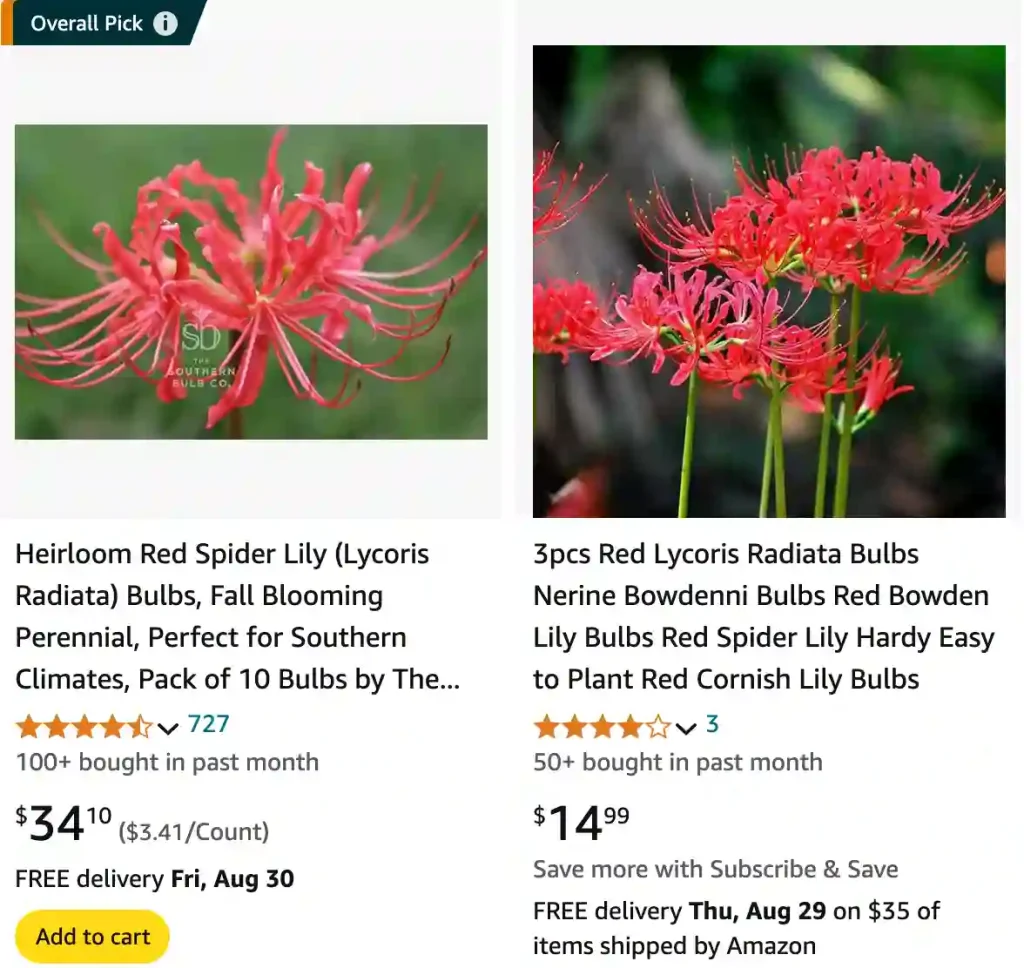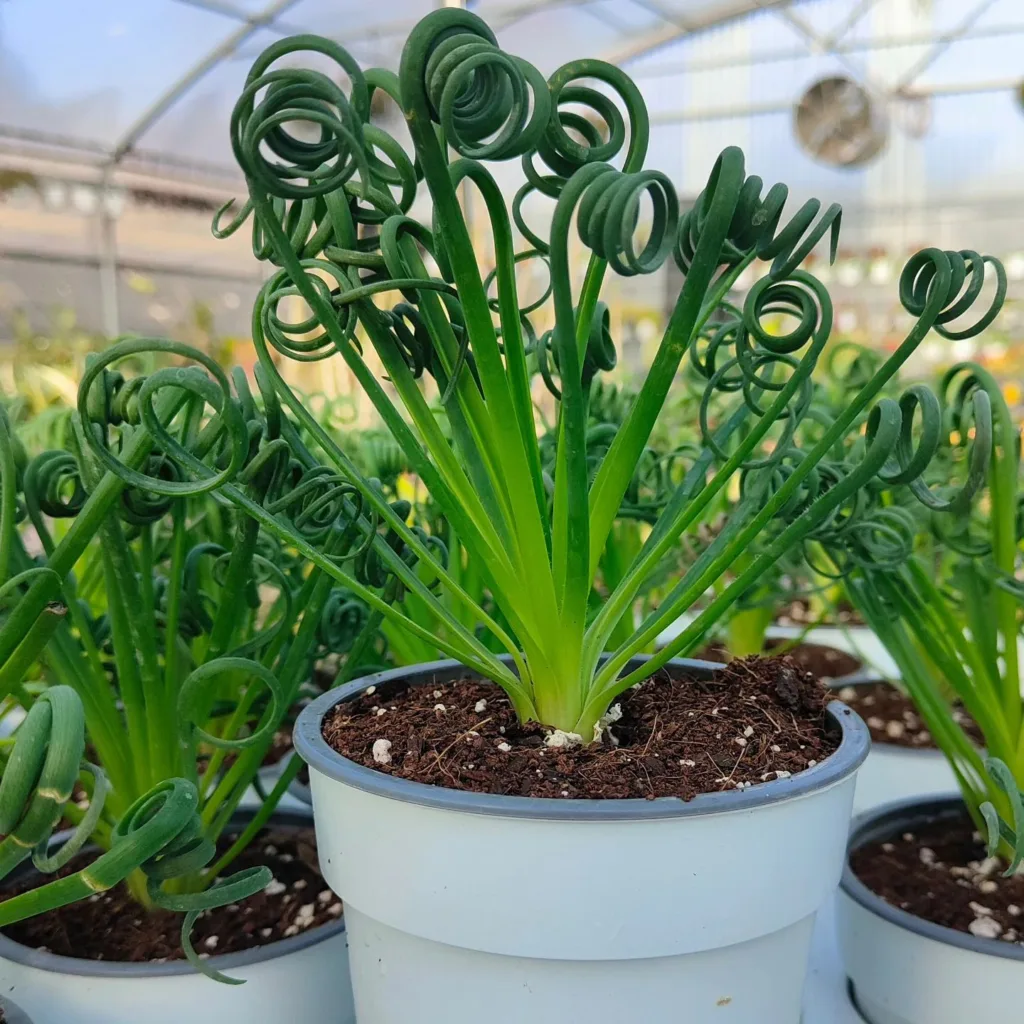
Red Spider Lily: Everything You Need to Know
Red Spider Lily, also known as Lycoris Radiata, is a striking plant that draws attention with its vibrant, flame-like flowers. Its unique appearance and intriguing history make it a popular choice for gardeners and flower enthusiasts. Here’s a comprehensive guide to this beautiful plant, covering everything from its symbolism to care tips.
29 Species in Genus Lycoris
Are Red Spider Lilies Poisonous?
One common concern about Red Spider Lilies is their toxicity. Yes, Red Spider Lilies are indeed poisonous. The entire plant, including the bulb, stems, and flowers, contains compounds that can be harmful if ingested. Symptoms of poisoning can include nausea, vomiting, and diarrhea. While the plant is toxic, it is not usually lethal unless consumed in large quantities. For safety, keep these plants out of reach of children and pets.
What Does Red Spider Lily Symbolize?
The Red Spider Lily carries a rich tapestry of symbolism. In many cultures, it is associated with death and the afterlife. In Japan, it is often linked to funerals and the spiritual world, symbolizing the end of life and the transition to the next. However, in other parts of the world, it can represent renewal and hope. The striking red color and unusual flower shape make it a symbol of change and transformation.
Where Do Red Spider Lilies Grow?
Red Spider Lilies are native to East Asia, particularly in regions of China, Japan, and Korea. They thrive in areas with well-drained soil and ample sunlight. These lilies prefer a temperate climate and can be grown outdoors in USDA hardiness zones 6 through 10. In their native habitats, they often grow in grassy or woodland areas, creating a beautiful contrast against the green foliage.
How to Grow Red Spider Lily
Growing Red Spider Lilies is relatively straightforward if you provide the right conditions. Here’s a step-by-step guide:
- Location: Choose a spot with full sun or partial shade. They prefer well-drained soil that isn’t too acidic.
- Planting: Plant the bulbs in the fall, about 4-6 inches deep and 6-8 inches apart. Ensure that the bulb’s neck is above the soil surface.
- Watering: Water the bulbs lightly after planting. Once established, Red Spider Lilies are quite drought-tolerant and only need occasional watering.
- Fertilization: Use a balanced fertilizer in the spring to promote healthy growth.
- Maintenance: After blooming, the foliage will die back. You can leave it to decompose naturally, which helps enrich the soil.
Where Can I Find Red Spider Lily?
Red Spider Lilies can be purchased from various sources, including local nurseries, garden centers, and online plant retailers. When buying, look for healthy bulbs that are firm to the touch. Online plant shops often have a wider variety of bulbs and may offer different cultivars. It’s a good idea to buy from reputable sellers to ensure the quality and authenticity of the bulbs.
Can You Grow Red Spider Lily Indoors?
Growing Red Spider Lilies indoors is possible but can be challenging. These plants need a lot of light to thrive, so choose a sunny window or use grow lights. The temperature should be kept cool, ideally between 60-70°F (15-21°C). While indoor growth is feasible, the plant may not bloom as profusely as it would outdoors. If you decide to grow them inside, be prepared for the added effort to meet their light and temperature needs.
How to Care for Red Spider Lily?
Proper care is crucial for keeping Red Spider Lilies healthy and vibrant. Here are some tips:
- Light: They need plenty of sunlight. Outdoors, ensure they get at least 6 hours of direct sun. Indoors, place them in the sunniest spot available.
- Soil: Well-drained soil is essential. You can improve soil drainage by mixing in sand or compost.
- Watering: Water sparingly once the plants are established. Overwatering can lead to bulb rot.
- Temperature: They prefer moderate temperatures. Protect them from extreme cold or heat.
How to Propagate Red Spider Lily?
Propagation of Red Spider Lilies is typically done through bulb division. Here’s how to do it:
- Timing: The best time to divide bulbs is in the fall, after the foliage has died back.
- Division: Gently lift the bulbs and separate the offsets (small bulbs that have formed around the main bulb).
- Replanting: Replant the divided bulbs immediately in a well-prepared soil bed, or store them in a cool, dry place until you are ready to plant.
What to Plant with Red Spider Lily?
Red Spider Lilies pair well with other late-blooming plants that complement their bold colors. Consider planting them alongside:
- Autumn Crocus: Adds a different shape and color to the garden.
- Japanese Anemone: Provides a softer contrast with its delicate blooms.
- Ornamental Grasses: Offers a nice texture contrast and can frame the lilies beautifully.
Is Red Spider Lily Toxic?
As mentioned, Red Spider Lilies are toxic. While they can be a stunning addition to your garden, it’s essential to handle them with care and keep them away from pets and small children. Wear gloves when handling the bulbs to avoid skin irritation.
Benefits and Common Problems
Benefits:
- Aesthetically Pleasing: Their bright red flowers can brighten any garden.
- Low Maintenance: Once established, they require minimal care.
Common Problems:
- Bulb Rot: Can occur if the soil is too wet.
- Pest Issues: Rarely, they may be affected by pests like aphids or spider mites.
Comparing Red Spider Lily with Other Similar Plants
Spider Lily vs. Crinum Lily: While both have striking flowers, Crinum Lilies are typically larger and have broader leaves. Red Spider Lilies have a more delicate, spider-like appearance.
Red Spider Lily vs. Amaryllis: Both are beautiful, but Amaryllis flowers are generally larger and have a different shape compared to the spidery blooms of the Red Spider Lily.
In conclusion, Red Spider Lilies are a stunning addition to any garden or home. With their striking appearance and rich symbolism, they are well worth the effort to grow and care for. Just remember to handle them with care due to their toxic nature and provide them with the proper conditions for optimal growth.
If i die, water my plants!



